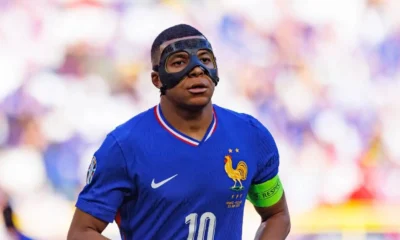Football
The story of Parc des Princes, the iconic stadium that belongs to Paris as much as Notre-Dame
You can feel his breath even if you just whizz through the tunnel that runs directly beneath him. From the Eiffel Tower, you can see how monumentally it rises near one of the curves of the serpentine Seine River.
You can feel his breath even if you just whizz through the tunnel that runs directly beneath him. From the Eiffel Tower, you can see how monumentally it rises near one of the curves of the serpentine Seine River. According to its architect, it is even as connected to Paris as Notre-Dame. Yes, many of you will recognise it correctly – we’re talking about the Parc des Princes.
On its present site, in the 16th arrondissement of Paris, in the western part of the French capital, close to both the Forest of Bologna and the River Seine, there was a wooded park before the Great French Revolution that was regularly visited by the royal family. Hence the name Park of the Princes.
The stadium was first opened the century before last, with the first visitors seeing it on 18 July 1897. A 666-metre-long bicycle track was subsequently built around the field, as the stadium was the responsibility of Henri Desgrange, a racing biker and founder of L’Auto magazine (the predecessor of the world-famous L’Équipe).
Prince’s Park was completely renovated 35 years after it was built. Desgrange, together with his business partner Victor Goddet, decided, among other things, to increase the stadium’s capacity to accommodate 45,000 people. But after a while, for the sake of comfort, it was reduced to 38 thousand and all seats had their seat.
The now rather large football stand could therefore be used for the historic third World Cup in 1938. The opening match of the championship was played there, as well as the semi-final between Hungary and Sweden.
After the war, other major events were added. The cycling track made the Tour de France possible, in 1954 rugby players came to the Parc des Princes to compete in the World Cup finals, and two years later Real Madrid won the first ever European Cup final at the Stade de Reims.
But that brings us to the key period of the late 1960s and early 1970s. That’s when French architect Roger Taillibert and Iranian artist Siavash Teimouri put their heads together to design a new look for the stadium. The look it still has today.
It was very innovative in its time and, when translated into reality, allowed the audience a great view even though they were standing 45 metres from the playing field.
In addition, Prince’s Park became a world first thanks to the lighting built into the elliptical roof of the structure. It was the inspiration for many other football stadiums.
And the Parisian sanctuary was also admired for its characteristic concrete “ribs” or its stunning acoustics, which even gave it the nickname “echo chamber”. Now, the Parc des Princes is officially described as “an important and legally protected icon of French architecture.”
If the home of France’s biggest club today has any minuses, they clearly include the excessive distance of the stands behind the gates from the turf. This is due to the fact that rugby use of the stadium was heavily considered in the design.
In the history of Princes Park, and especially the modern one, the date 25 May 1972 looms large. On this day the third, and to this day the last, football structure on the site was opened. This was on the occasion of the international match between France and the USSR.
And having mentioned the key period of the introduction to the 1970s, it should be added that on 12 August 1970, the best players from Paris FC and Stade Saint-Germain were brought together to form Paris Saint-Germain.
The latter began playing at the Parc des Princes during the 1973/74 season, at the end of which it won promotion to the top French competition, where it has remained ever since. It then moved to the stadium for good the following season and won the league title 9 times.
The very last changes to the iconic football superstructure were made in 2013. That was when steps were taken to modernise the stadium overall and a number of current trends were adopted, so that fans could have the best possible experience from every visit, while being as safe as possible.
However, the players’ facilities were equally adapted, the changing rooms were renovated, the turf was completely replaced and many other more or less noticeable things were changed.
Princes Park as we know it today has 48,000 seats and can therefore accommodate the same number of spectators. It is divided into 17 categories and the ticket offer is one of the most advanced ever. The club has even developed its own special platform to sell them. That is why it holds the European record for consecutive sell-out matches, which was 62.
So much for the past and present. And what about the future? As early as 2024, Paris will be hosting the Summer Olympics, with the Parc des Princes set to host matches of the football tournament. Even with this in mind, a major expansion of the home of the PSG is in the pipeline, after which up to 60,000 people could head to its stands each time.
In conclusion, perhaps just a glance back to the very beginning: may the Park of Princes continue to flourish and adorn French architecture with a different fate to that of the Notre-Dame Cathedral.
Sources: Ligue 1, PSG, Wikipedia












